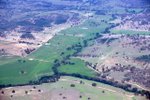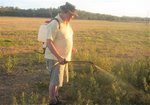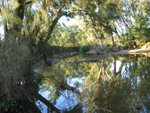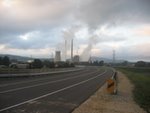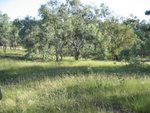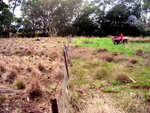“It buys us time…” “C Sequestration in soil and vegetation is a bridge to the future. It buys us time while alternatives to fossil fuel take effect.”
 - Dr Rattan Lal, Director, Carbon Management and Sequestration Center, Professor of Soil Science, School of Natural Resources
- Dr Rattan Lal, Director, Carbon Management and Sequestration Center, Professor of Soil Science, School of Natural ResourcesOhio State University
“Unlike others… it is immediate…”"Unlike many other technologies to offset fossil fuel emissions, land management for soil C sequestration can be implemented immediately.... An immediate offset of CO2 emissions provides a significant delay in the rise of atmospheric CO2 concentration. By the time that we saturate the soil’s capacity to store additional C, other methods of reducing emissions or sequestering carbon may be available or already in use.” - Professor Bruce McCarl, Agricultural Economist and Economist, Climate Change, Texas A&M University; Member of the Intergovernmental Panel on Climate Change.
 DR MCCARL WITH MICHAEL & LOUISA KIELY AT TEXAS A&M UNIVERSITY
DR MCCARL WITH MICHAEL & LOUISA KIELY AT TEXAS A&M UNIVERSITY“Available… low cost…” "Terrestrial C sequestration has immediate application in climate change mitigation due to its availability and relatively low cost."
- Professor Charles Rice, Department of Agricultural Economics, Kansas State University, Director of the Consortium for Agricultural Soils Mitigation of Greenhouse Gases. Dr. Rice is recognized as one of the leading soil microbiologists in the United States.
“It’s here… now…”
“Terrestrial sequestration is here and now. It’s user friendly. It’s easy to do. It can play a critical role in the early stages of our response, ahead of other methods [forestry, geologic burial].” - Dr. John Antle, Professor of Agricultural Economics and Economics at Montana State University, Technical Leader, Economics, BigSky Carbon Sequestration Partnership
WHO IS ASKING FOR YOUR SUPPORT IN THE BATTLE AGAINST GLOBAL WARMING?
Michael and Louisa Kiely are Convenors of the Carbon Coalition Against Global Warming and regular speakers at the “Managing The Carbon Cycle” Forums around Australia. They have been delegates at many high level symposia in Australia and the USA. The couple endured 25 flights in 22 days on a fact-finding tour of the USA on behalf of Australian abatement providers in 2006. While there, they negotiated the first order for soil carbon credits from the Chicago Climate Exchange. They appeared as expert witnesses before the NSW Premier’s Advisory Panel on Greenhouse Gas. They are members of the Australian Business Council for Sustainable Energy. For the Carbon Coalition - which has more than 550 members across Australia and a chapter in the USA - they manage member registration and communication (email newsletters, websites and blogsites), lobbying and representation to federal and state politicians and ministers, fundraising and seeking sponsorship, seeking funds for research, co-ordinating submissions to government climate change and carbon trading enquiries, and liaising with scientists. They set up Carbon Farmers™ as a vehicle so members could trade their soil carbon.
